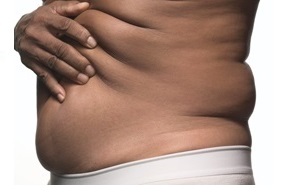Obesity, Dieting, Bone Loss, Exercise
"When undergoing weight loss therapy, patients should incorporate as much as possible some resistance exercise to protect against bone loss."
"Resistance exercise should be at least moderate in intensity."
"We do not know if less-intense exercise would be effective in protecting against bone loss during weight loss."
Dr.Dennis Villareal, Baylor College of Medicine/Michael E.DeBakey VA Medical Center, Houston, Texas
 |
| Fragility fractures represent 80 percent of all fractures in post-menopausal women |
"Based on this study, one would conclude that [for] an older adult who is obese and trying to lose weight, the combination of aerobic and resistance exercise will help the most to maintain their bone mineral density and their general physical fitness."
"Older adults who are able should do muscle-strengthening exercise [resistance exercise] at least twice a week."
"It is recommended that older adults with multiple chronic conditions make sure they understand how these conditions affect their ability to exercise and all older adults should be as physically active as their abilities and conditions allow."
Dr.Cynthia Brown, Integrative Center for Aging Research, University of Alabama, Birmingham
 |
| Image by Digital Vision |
According to a new study published in the Journal of Bone and Mineral Research, obese adults prescribed therapeutic weight-loss diets are susceptible to bone thinning, but by practising resistance exercise they may be able to protect themselves against bone loss. The potential among obese adults to an increase in the risk of thinning, brittle bones prone to fractures resulting from weight loss, can be mitigated by exercise to strengthen bones, reducing risk of falls and fractures.
Researchers randomly assigned 141 obese adults to one of four groups for the study.
- Dieters who only performed resistance exercise;
- Dieters who only performed aerobic exercise;
- Dieters who performed both types of exercise;
- A control group that neither exercised or dieted.
 |
All participants shared a BMI of 30 or greater at baseline, and on average were 70 years of age. Participants in the exercise groups were given customized diets planned for a deficit of about 500 to 750 calories daily and performed one-hour supervised workouts, three times weekly.
While aerobic exercises included treadmill walking, riding a stationary bicycle, and stair-climbing, resistance exercises included upper- and lower-body exercises, with the use of weight machines. Some activities designed to improve balance and flexibility were also performed by all exercisers. There was a six-month followup for the study, which left answered whether one exercise type might be superior to another for fall or fracture prevention.
 |
| Elderly and middle-aged people exercise at a temple in Tokyo's Sugamo district, an area popular among the Japanese elderly, Japan. (REUTERS/Toru Hanai) |
Labels: Aging, Bioscience, Bone Density, Health, Obesity, Research, Weight Loss

0 Comments:
Post a Comment
<< Home